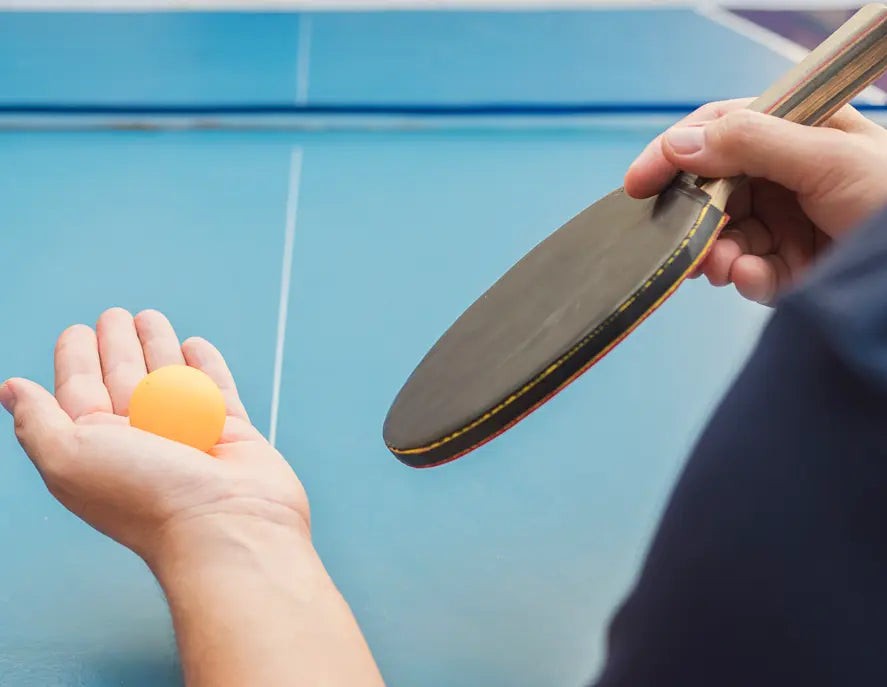Table Tennis Rules Explained: A Beginner’s Guide

Popularly called table tennis or ping pong, the game is fast, fun, and rapidly competitive. But before you dive into the world of table tennis, it’s important to understand the rules that keep the game fair and extremely exciting.
This beginner-friendly guide explains the official table tennis rules, including how to serve, score, and play singles or doubles. Be it you're playing casually at home or getting ready for tournaments, mastering these rules will improve the fairness in your game—and ensure you never lose a point unfairly.
Basic Objective of Table Tennis
The main objective of table tennis is simple: gain points by dodging the ball over the net across your opponent’s side of the table in a way that they cannot return it casually. For an unending rally, always choose a suitable table tennis paddle. Each rally starts with a serve and ends when:
- A player fails to return the ball to the opponent
- The ball pitches more than once within nets
- The ball is hit into the net or off the table
Table Tennis Scoring Rules
Here’s how the scoring system works:
- A game is played to 11 points
- A player must win by at least 2 points
- Matches are usually best of 5 or 7 games
- Each player serves two consecutive points, then service goes to the opponents. At 10–10 (deuce), service alternates every point until someone wins by two.
- Example: If the score is 11–10, play continues. The game ends only when one player leads by two (e.g., 13–11).
Legal Serve Rules in Table Tennis
A proper serve is critical. The International Table Tennis Federation (ITTF) has strict guidelines:
- The ball must be freely placed on the open palm
- Toss the ball at least 16 cm (6.3 inches) in the upward direction
- Strike the ball after it starts falling
- The ball must pitch once on your side, then another one pitch on the opponent’s side
- The serve must be visible to the opponent (no hiding the ball)
- Let Serve: If the ball hits the net but still lands legally, it’s a “let” and the serve is replayed.
- Important: In doubles, the serve must start from the right-hand box to the opponent’s right-hand box.
How Rallies Work
After the serve, both players rally the ball alternately across the net. The rally continues until someone:
- Misses the ball
- Hits it off the table without bouncing
- Hits it into the net
- Strikes the ball twice in a row
- Touches the table with their non-playing hand
- You must let the ball bounce once before returning it (unless you're playing a volley rule, which is not standard in official games).
Doubles Rules in Table Tennis
In doubles play, there are extra rules to follow:
- Serving must go diagonally (right to right box)
- Players alternate turns hitting the ball—you can’t hit twice in a row, even within the same team
- At every 5 points (in a 10-point game), teams switch servers
Note: After each game, teams switch sides, and if a deciding game is played, they switch again when one team reaches 5 points.
What Is a Let in Table Tennis?
A “let” is when a rally is stopped and replayed, usually due to:
- Serve touching the net but landing correctly
- Receiver not ready when serve is made
- Disturbances (e.g., ball from another table enters play)
-
No points are awarded during a let.
Tips for Learning the Rules Faster
If you're just starting out, here are a few ways to master the rules quickly:
- Watch official matches—see the rules in action
- Use scoreboards or apps to track your games correctly
- Practice serves—most beginners struggle with legal serving
Join a local club to get rule coaching and live feedback
Are These Rules the Same Everywhere?
Most professional and recreational games follow ITTF rules, but house rules may vary slightly. Always agree on rules beforehand—especially for serve style, scoring (11 vs 21), and who serves first.
Final Thoughts
Understanding table tennis rules is the foundation of playing fair and improving quickly. As you grow more familiar with the flow of the game—from serving to rallying to scoring—you’ll find the rules become second nature.
Whether you're a beginner, a casual player, or an aspiring club champion, knowing the official ping pong rules gives you a huge edge. So next time you pick up a paddle, play with confidence—and play by the book.



